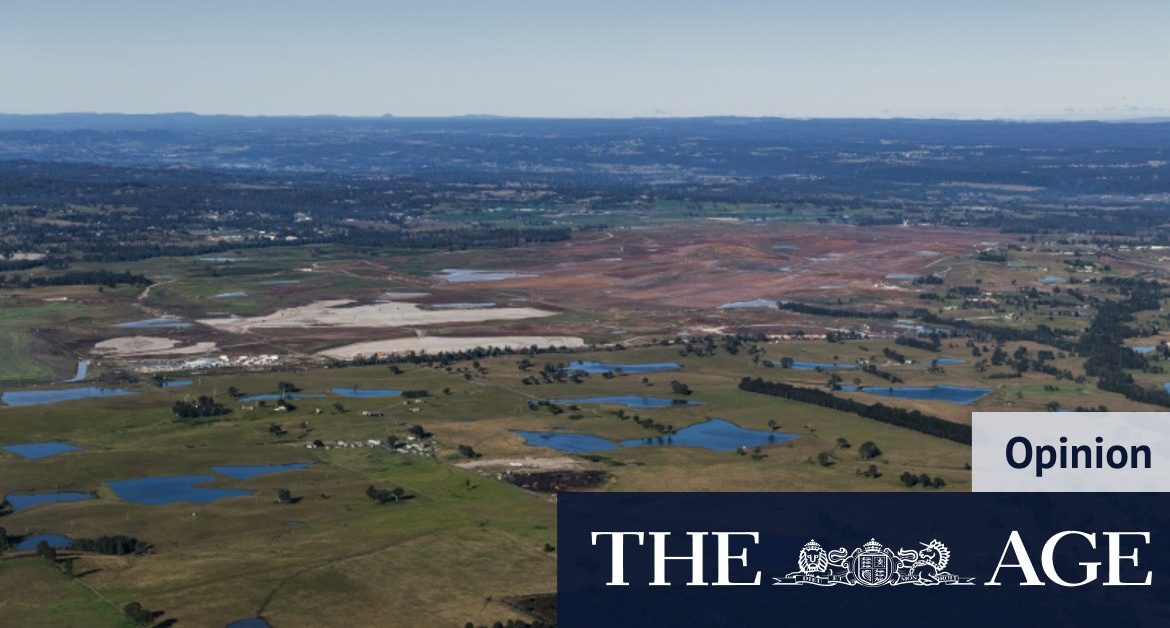Let’s go back a bit. You may not have noticed, because that’s how much influence planning has on actual life, that the Greater Sydney Commission has divided Sydney into three cities; the Eastern Harbour City, Central River City and Western Parkland City.
The Eastern Harbour City extends some 30 kilometres inland to around Auburn. Over that distance, it shows a clear gradient of increasing heat, pollution and metastatic towers-and-motorways disease, from zero in the east (where former GSC chief commissioner Lucy Turnbull has her palatial spread) to, well, truckloads.
The Central River City centres on Parramatta, henceforth known as GPOP, or Greater Parramatta and Olympic Park. Indeed, when you drill down, the Central River City appears largely to comprise an infestation of impenetrable acronyms. There’s the GPOP PIC (Greater Parramatta and Olympic Park Place-based Infrastructure Compact). There’s the GPOP SIC (or Special Infrastructure Contribution) and there’s the special HAF (Housing Acceleration Funding) or developer leg-up. There’s also the Co.Lens tool that “enables viewing, integration and analysis of inputs to the PIC Pilot”.
All of this, as has become the Department of Planning’s egregious habit, was made available for public consultation before Christmas, in scores of tiered-and-categorised PDFs you’d need a PhD and a 10-year term in solitary to apprehend.
Essentially, though, each of the three cities centres on its own “economic corridor” – whatever that actually is. Personally, I imagine a kind of ten-lane spillway – viz the Jack Nicholson nose-slicing scene in Chinatown – sluicing money from the poor to the rich. And in truth, that’s roughly right.
It turns out an economic corridor, as defined by our Great Wise Planners, is really just transport-linked globs of office space. The Eastern Economic Corridor is essentially the Sydney Metro (with a bit of Pacific Highway thrown in), snaking from Macquarie Park in the north west, through Chatswood and the city centre to Mascot and Campsie in the south west. GPOP’s economic corridor is less corridor than catastrophe; the ongoing high-rise catastrophe they’re making of Parramatta city centre. And the Western City? What will its economic corridor comprise?
An artist’s impression of the aerotropolis, the Great Sydney Commission’s answer to creating an economic corridor in the most western part of Sydney.Credit:Aerotropolis Authority
Greater Sydney has almost 10 million square metres of office space. Of this, nearly all – 90 per cent – is in the eastern city and the rest is in the GPOP. That leaves the Western Parkland City with, well, nothing much. Enter, The Aerotropolis.
It sounds desperate. Especially given that aviation is implicated in both of the two huge crises facing humanity – climate change and pandemic – and has ground to a possibly permanent halt, largely for that reason. This seems a less than perfect moment to select “airport” as economic driver for a city of well over 1.5 million inhabitants.
But that’s just the start. There’s a reason why railways generally terminate deep within city centres while airports are always kept on the doorstep. An airport is noisy, dirty and dispersed. A city, by contrast, is a centre of delight and desire, of creative talent and socio-intellectual stimulus as well as economic exchange. A city must be founded in authenticity, in the reality of place, not some mad desire for escape.
Now in particular we need cities that encourage small, local journeys over big, abstract ones. We need to make localism not just easier and more useful (by creating gentle streets and neighbourhoods that mix work and living) but more delightful. Rather than letting developers build vast tracts of cookie-cutter apartments and huge-footprint office blocks and calling that city-making, we must encourage more humane fabric of smaller scale and greater intricacy.
Loading
Good cities are founded, at some level, on a kind of beauty. It could be the beauty of a walking lifestyle, a zero-carbon energy regime, a city of hyper green villages. Instead, the aerotropolis cements in a last-century transport model that diminishes our connection with nature then surrounds it with a lot of drive-to, depressing-looking building blocks.
It could be exciting. Instead it’s dull, dispiriting and downright unimaginative. Sydney can do better than this. What do we have to do to get some leadership here?
Elizabeth Farrelly’s latest book Killing Sydney will be published on January 26.
Elizabeth Farrelly is a Sydney-based columnist and author who holds a PhD in architecture and several international writing awards. She is a former editor and Sydney City Councilor. Her books include ‘Glenn Murcutt: Three Houses’, ‘Blubberland; the dangers of happiness’ and ‘Caro Was Here’, crime fiction for children (2014).
Most Viewed in National
Loading







